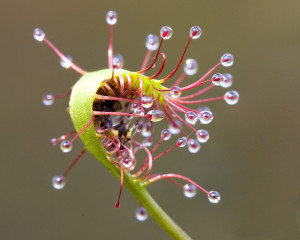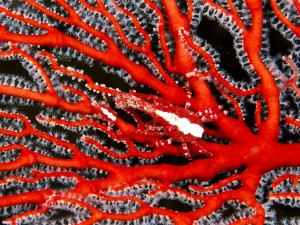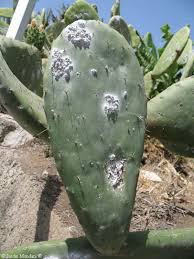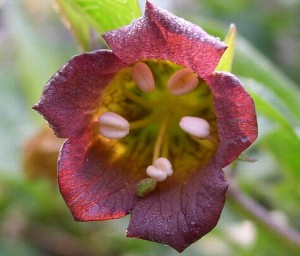
Homeopathic Remedies and Treatment for Whooping Cough
Pertussis, also known as whooping cough, is an infection of the respiratory system caused by the bacterium Bordetella pertussis (or B. pertussis). It’s characterized by severe coughing spells that end in a “whooping” sound when the person breathes in.
Symptoms of whooping cough:
The disease begins with a cold and a mild cough. After this, the typical coughing bouts set in. The coughing continues until no air is left in the lungs. After this comes a deep intake of breath that produces a heaving, ‘whooping’ sound when the air passes the larynx (windpipe) that gives rise to the name of the disease.
The patient will eventually cough up some phlegm and these attacks may well be followed by vomiting. The child’s temperature is likely to remain normal.
A bout of Whooping Cough can be very distressing for both the child and the parents who feel unable to help.
Coughing attacks may occur up to 40 times a day and the disease can last for up to eight weeks.
Homeopathic Remedies and Treatment for Pertussis or Whooping Cough:
DROSERA
Drosera is one of the remedies praised by Hahnemann; indeed, he once said that Drosera 30th sufficed to cure nearly every case of whooping cough, a statement which clinical experience has not verified. Drosera, however, will benefit a large number of the cases, if the following indications be present: A barking cough in such frequent paroxysms as to prevent the catching of the breath; worse in the evening. All efforts to raise the phlegm end in retching and vomiting. The attacks are especially worse after midnight; the child holds its epigastrium while coughing. The Drosera child cries a great deal. Arnica has crying before coughing because recollection or previous soreness and pain in present. Bayes says: “Drosera is more useful in whooping cough than any other remedy in our Materia Medica.” Unlike Hahnemann, however, he claims that the higher dilutions are powerless, and he prescribes the first. Drosera acts better in pure, uncomplicated whooping cough, and while it will correspond to some epidemics it will fail in others.
Solanum Carolinense has a good clinical record in explosive and spasmodic coughs, and is recommended by electric physicians as almost specific.
CASTANA VESCA
Has also been vaunted as a specific in the 3x dilution.
CUPRUM
In whooping cough accompanied with convulsions, or when the paroxysms are long and interrupted, Cuprum will be the remedy. Spasms of the flexor muscles predominate. The cough is very violent and threatens suffocation. This remedy will come in sometimes very nicely after Drosera and do good work. The patient coughs up a tough, gelatinous mucus, there is much rattling in the chest, and the face and lips are bluish. A great characteristic of the remedy is the relief from a swallow of cold water. Hale mentions the usefulness of Cuprum in cases accompanied with spasms, clenched hands, etc.
CORALLIUM RUBRUM
This is a very useful remedy in severe cases of whooping cough. Before the cough there is a smothering sensation. The child gaps and becomes black in the face. It is a remedy for that shot, quick, ringing cough known as the “minute gun” cough. The smothering shows itself in the form of gasping, crowing inspirations. After each attack of cough the child sinks back perfectly exhausted. No other drug produces such a violent paroxysm. It is perhaps oftener indicated in the later stages of the affection, but the neurotic element must be present, and also the constriction of the chest before the attacks. The crowing inspiration of whoop is not so pronounced as under Mephitis. Dr. Teste recommended Corallium and Chelidonium as comprising the entire therapeutics or whooping cough, and Dunham praises Corallium in violent cases.
COCCUS CACTI
This remedy has paroxysms of cough with vomiting of clear, ropy mucus, extending in thick, long strings even to the floor. This is sometimes seen in children who cough and cough with this tenacious mucus stringing from mouth and nose, waving to and fro until it finally gives way. The paroxysms come on in the morning, and accompanying them there is often vomiting of a clear, ropy mucus. Eructations of wind following cough are an indication for Ambra grisea. Coccus is a useful remedy for the protracted bronchial catarrhs remaining after whooping cough. The excessive secretion of mucus under Coccus is marked and causes the child to strangle. The choking is most characteristic, even more so than the strangling.
MEPHITIS
Mephitis is useful in a cough with a well marked laryngeal spasm, a whoop. Cough is worse at night on lying down, there is a suffocated feeling, and the child cannot exhale. Farrington observes that this remedy will often apparently make the patient worse, while it really tends to shorten the course of the disease. The catarrhal symptoms calling Mephitis are slight, but the whoop is prominent. The smothering comes on with cough, while with Corallium rubrum it comes on before the cough, and is followed by great exhaustion. There is not much expectoration with Mephitis. There are many spasmodic symptoms with this remedy, such as cramping of the legs at night. The writer has also seen good results from Naphthalin when the cough is very dry and catarrhal symptoms not pronounced, and the paroxysms of extreme length, and the constriction of the chest are present. It is a remedy that is especially suitable to whooping cough in adults. One of Hahnemann’s therapeutic hints in whooping cough is Ledum, which has a spasmodic racking cough, and should be thought of in connection with this affection.
BELLADONA
In sudden violent paroxysms of whooping cough, without any expectoration, and the symptoms of cerebral congestion, Belladonna will be found useful. Epistaxis may accompany, and the patient is worse at night. Boenninghausen says that it is suitable mostly in the beginning of the disease, or, later, when there is fever. Often in the beginning of the disease it use will shorten and modify the disease. Another indication for belladonna is present when the attacks terminate by sneezing. The cough is excited by a tickling in the throat, as if from down. Retching and vomiting and pain in the stomach are prominent symptoms, but when Belladonna is the remedy the congestive symptoms will be present and active, the onset sudden; the child grasps at the throat and clings to its mother, as if frightened.
IPECAC
Convulsive cough, where the child stiffness out and becomes blue or pale and loses its breath, great nausea and relief from vomiting are prominent symptoms for Ipecac. A “gagging cough” is a good indication for the remedy. The discharge of mucus is copious and tenacious, and the patient is very weak after the attacks. Violent shattering coughs following each other in quick succession, not permitting recovery of breath, indicate Ipecac. he child is limp and weak, and there is free perspiration. Sulphur is an excellent remedy for vomiting after the paroxysmal cough.
ANTIMONIUM TARTARICUM
With this remedy the child is worse when excited or angry, or when eating; the cough culminates in vomiting of mucus and food. There is much rattling of mucus in the chest, but the expectoration is slight. The child demanding Antimonium tartaricum will be irritable and cross, and will cry, when approached; the tongue will be white and weakness will be present. If diarrhea be present with great debility and depression of vital forces, or if the child vomits its supper shortly after midnight, Antimonium tartaricum will be the remedy. It also has marked aggravation from warm drinks.
CINA
This is not always a worm remedy. It is a most excellent remedy in whooping cough. It has the same rigidity as Ipecac, the child stiffness out and there is a clucking sound in the esophagus when the little one comes out of the paroxysm. Grinding of the teeth during sleep will further indicate Cina. It, is of course, specially indicated by symptoms of worms and in children who are predisposed there to.
MAGNESIA PHOSPHORICA
This is the prominent Schuesslerian remedy for whooping cough, which begins as does common cold. The attacks are convulsive and nervous, ending in a whoop. Clinically, I have found this remedy, used in the 30th potency, to act marvelously in certain epidemics. While associated with Dr. William Boericke, of San Francisco, it was not an uncommon thing for a patient to come to us for “some of our whooping cough remedy,” which was nothing else than Magnesia phosphorica 30th. It seemed especially adapted to the then prevailing epidemic. The indications may be stated as cough in severe paroxysms, with blue or swollen and livid face, with a severe whoop.
Kali sulphuricum will also at times be found useful.
SANGUINARIA NITRATE
This remedy is useful when there is hoarseness, rawness in the throat and larynx, and headache.
KALI BICHROMICUM
This remedy suits cases where there is a hoarse cough; child breathes superficially and rapidly to prevent attacks of coughing. It is a coarser cough than that of Hepar, worse from eating and on inspiring deeply; there is a general catarrhal involvement of the nose, throat and frontal sinus, and the expectoration is yellow, tough and stringy, differing from that of Coccus cacti in being yellow.
Coqueluchin or Pertussin, a nosode of whooping cough, is advocated by Dr. J. H. Clarke, of London, who claims food results from its use. A spasmodic hacking, deep-sounding, croupy cough with coryza and difficulty in getting the breath seem to be the indications. Cartier and others report success with the remedy. It is better used not lower than the 30th.
Note: The information here is educational only and is not intended to diagnose or treat any disease. Please see your Homeopath or Health Care Professional if you suspect that you or you child may have Whooping Cough.
ClassicHomeopath





Leave a Comment